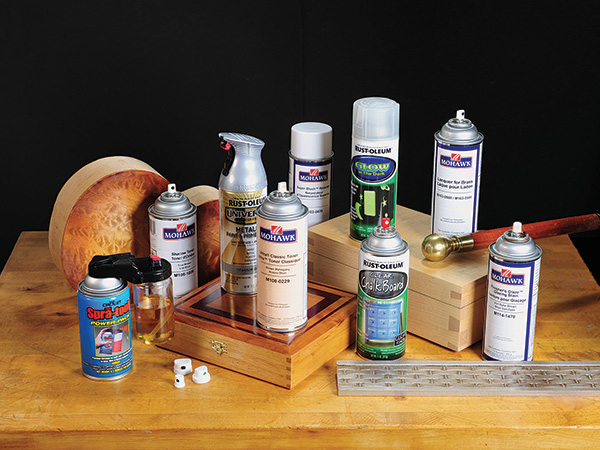
I have just finished a TV cabinet for myself out of radiata pine, and it looks good. I would like to stain it, and would like to have a go at spraying stain and a clear finish. I’ve only used a wipe-on method before, which provided good results. Have you got any tips to lead me from start to finish of my project? I understand that you can use mineral turpentine to wipe down timber with oil-based stains, but is it OK to use mentholated spirits on waterbased stain?
Michael Dresdner: Learning to spray is a lot like learning to drive a car. It is not all that difficult, but it is wise to practice controlling the equipment before you head out on a major road trip. The best “tip” I can give you is “finish firewood first.” Practice spraying both stain and finish on scrap wood or cardboard until you have the basics under control. Since it is such a large topic, you’ll find both books and videos (some of them mine) that cover the basics of spraying, but in my opinion, time spent with someone who already knows how to do it is the best way to learn. Come to think of it, driving a car also like that.
As for your other question, I think you are asking if you can use alcohol (what we Yanks call mentholated spirits) to wipe down waterbased stains. If you are wiping stain when it is still wet, you shouldn’t need any solvent at all. Whether or not alcohol will re-dissolve semi-dry stain depends largely on the formulation of the stain. With some, it will, with others it will not. That sounds like another ideal invitation to practice on firewood first.
Rob Johnstone: If your pine cabinet looks good right now I would recommend not staining it & by spraying or any other means. I know this is a personal opinion not shared by many, but I have seen so many lovely pieces made of pine that ended up looking wretched after a staining attempt went south. Pine’s characteristics make it very tricky to stain evenly. What often happens is a first blotchy attempt is “fixed” by a second darker and equally uneven stain application. At this point a frustrated woodworker has the choice of sanding the whole project down to clear wood, painting the piece, or covering it with a clear finish that will preserve and display the crummy stain job for all to see. (This can lead to years of expensive counseling – so please stop now and save yourself the agony!) My personal choice for adding color to pine is amber shellac. It complements the natural color of pine and builds up quickly. (With an additive that reduces its surface tension, it can even be sprayed with great results.)





